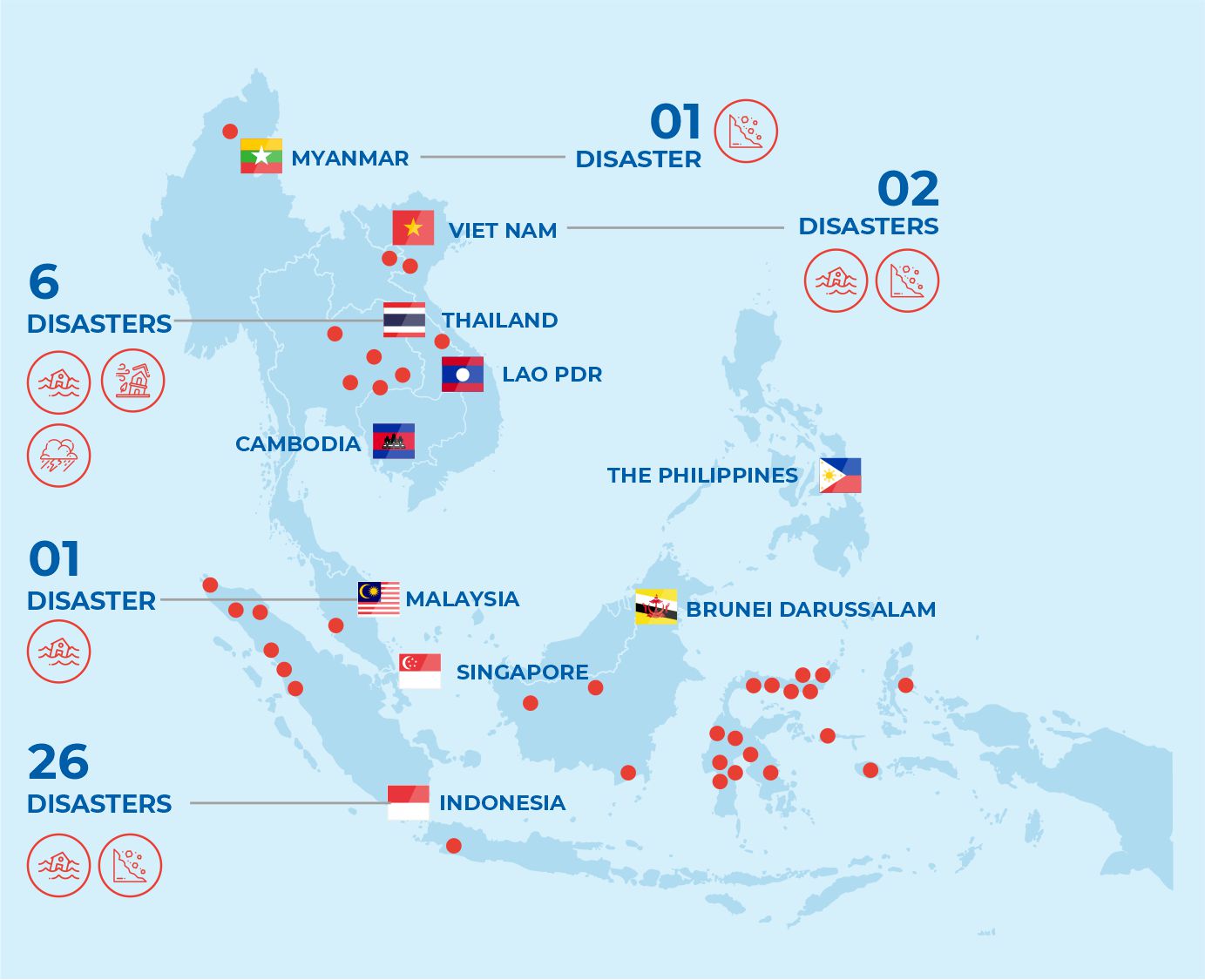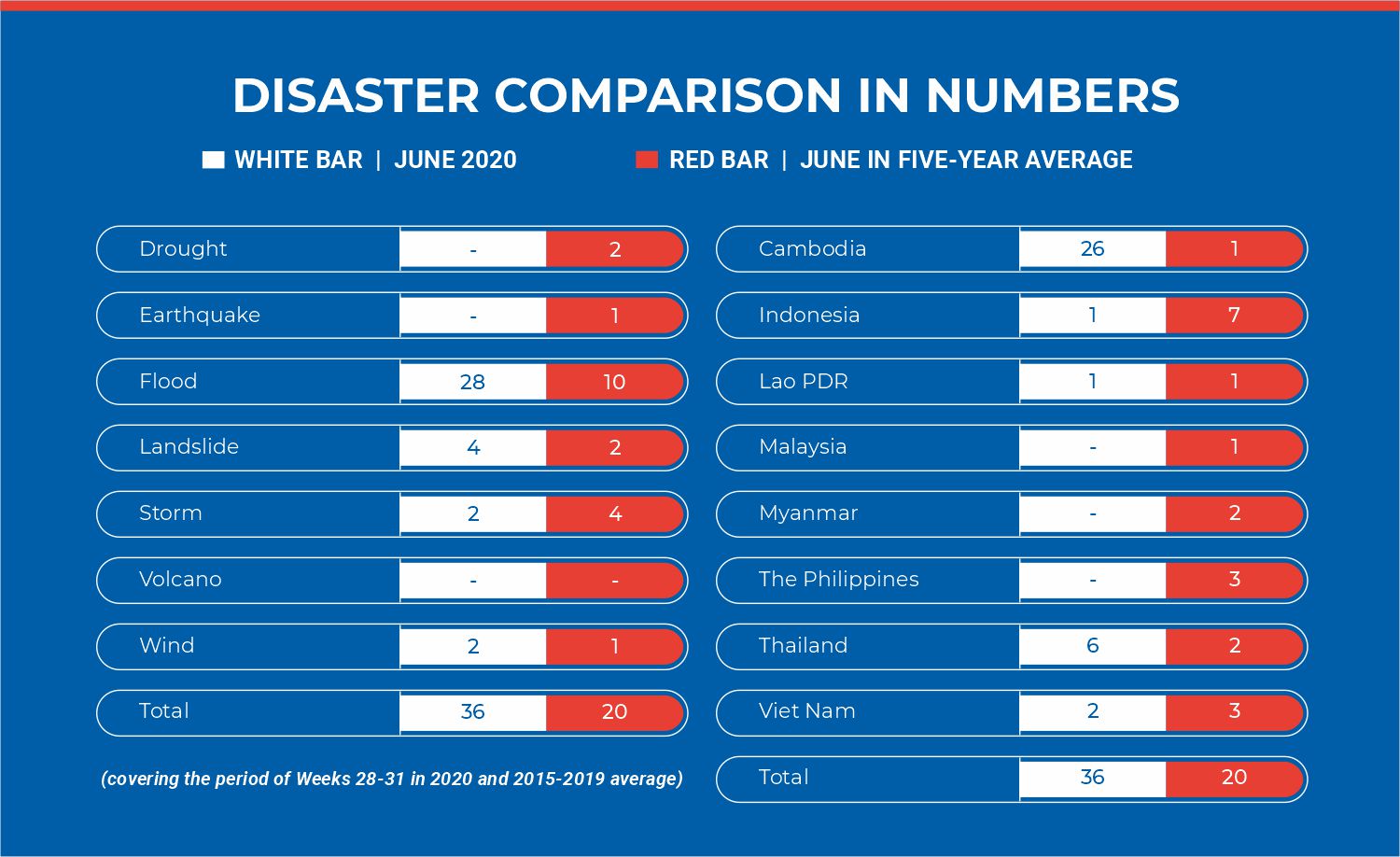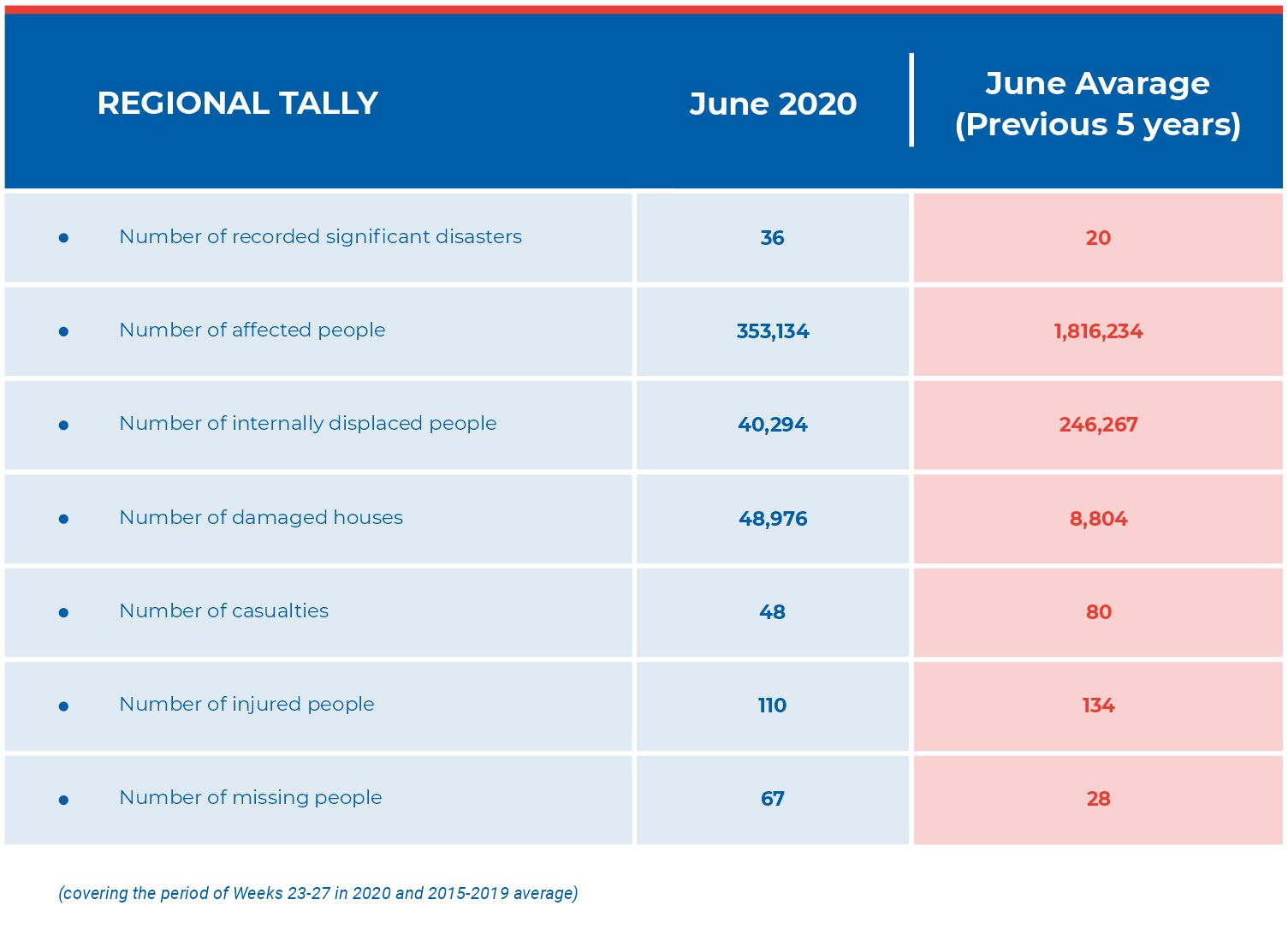
MONTHLY DISASTER REVIEW AND OUTLOOK
JULY 2020 | DISASTER MONITORING & ANALYSIS
(DMA) UNIT, AHA CENTRE
GENERAL REVIEW OF JULY 2020
There were 36 recorded disaster events during the month of July 2020, representing almost double the amount averaged across the previous five years. However, the number of affected people was 353,144 persons, significantly lower than the five-year average. The monthly disaster statistics also indicated lower figures in terms of internally displaced people, casualties, and injuries, which could be attributed to increased capacity in disaster management within the ASEAN Member States.
The month of July was characterised by multiple flooding events happening in Viet Nam, Myanmar, and Indonesia. The recorded flooding events were almost triple the amount of the last five years for July. Viet Nam’s Disaster Management Authority (VNDMA) reported flooding and landslides in Ha Giang and Cao Bang Provinces. On 21 July, Ha Giang City recorded 378mm of rain in 24 hours, while Dao Duc recorded 395mm and Cao Bo (both in Ha Giang Province) 401mm – while usually 180mm or more of rainfall per day is considered heavy. Meanwhile, Myanmar experienced widespread seasonal flooding due to increased rainfall in the upstream region of the Ayeyarwady river during the latter parts of the month. In Indonesia, South Sulawesi experienced multiple flooding events, with the highest impact felt in the region of North Luwu, where flash flooding took place due to heavy rainfall on 12 July. The North Luwu flooding was triggered by high-intensity rain that occurred across the two previous days, causing Masamba River, Rongkang River and Rada River to burst their banks. The North Luwu floods resulted in 38 fatalities and 14,483 displaced people, that contributed to 79% of the all ASEAN disaster casualties for the month of July.
23 significant earthquakes (M≥5.0) were recorded in the region by Indonesia’s Badan Meteorologi, Klimatologi, dan Geofisika (BMKG) and the Philippine Institute for Volcanology and Seismology (PHIVOLCS). Two volcanoes in Indonesia (Karangetang and Sinabung) are registered at Alert Level III according to Pusat Vulkanologi dan Mitigasi Bencana Geologi (PVMBG), and are under close monitoring. Lastly, Ibu, Semeru and Dukono mountains in Indonesia remain on Alert Level II, despite recent volcanic activity registered by the PVMBG.
SEASONAL OUTLOOK
According to seasonal outlooks from the ASEAN Specialised Meteorological Centre (ASMC), during July 2020 most of the equatorial region experienced above-average rainfall. The largest positive anomalies (wetter conditions) were recorded in the coastal equatorial regions based on satellite-derived rainfall estimates datasets. For the mainland Southeast Asia, below-average rainfall was observed over northern Viet Nam and coastal Myanmar. The prevailing Southwest Monsoon conditions are expected to continue into August and September 2020, and gradually weaken in October 2020 as the inter-monsoon period sets in. Climatologically, the Southwest Monsoon season is characterised by rainy conditions in the northern ASEAN region, and dry weather in southern ASEAN. During the August-October 2020 period, the prevailing winds in the ASEAN region are forecast to blow from the southeast or southwest.
For the August-October 2020 period there is an increased chance of above-average rainfall over much of the maritime continent and southern coastal regions of the Mekong sub-region. The equatorial Pacific Ocean are currently at neutral (neither El Niño nor La Niña) conditions, and observed indicators and models predict La Niña-like conditions to develop within the next three months. La Niña conditions are typically associated with wetter-than-normal conditions across the Southeast Asia region.
The warmer-than-average temperature is expected to continue over the ASEAN region for the next three months. However, near-normal temperatures can be expected over some parts of Borneo, northern parts of Lao PDR, and Viet Nam.
In the southern ASEAN region, while wetter-than-normal conditions are forecast over the equatorial region for the August-October period, dry conditions can still be expected over some parts of Sumatra and Kalimantan in Indonesia. This could increase the risk of land and forest fires in the region, and the occurrence of transboundary haze from such fires in the region cannot be ruled out. In the northern ASEAN region, hotspot activities are expected to remain generally subdued due to rainy weather.
Data Sources: ASEAN Disaster Information Network, ASEAN Specialised Meteorological Centre
Written by : Keith Paolo Landicho, Lawrence Anthony Dimailig, Aril Aditian
DISCLAIMER
Disclaimer: AHA Centre’s estimation is based on data and information shared by National Disaster Management Organisations (NDMOs) and other relevant agencies from ASEAN Member States, international organisations and news agencies. Further information on each recorded-significant disaster, description and detail of data and information are available at: http://adinet.ahacentre.org/reports.



